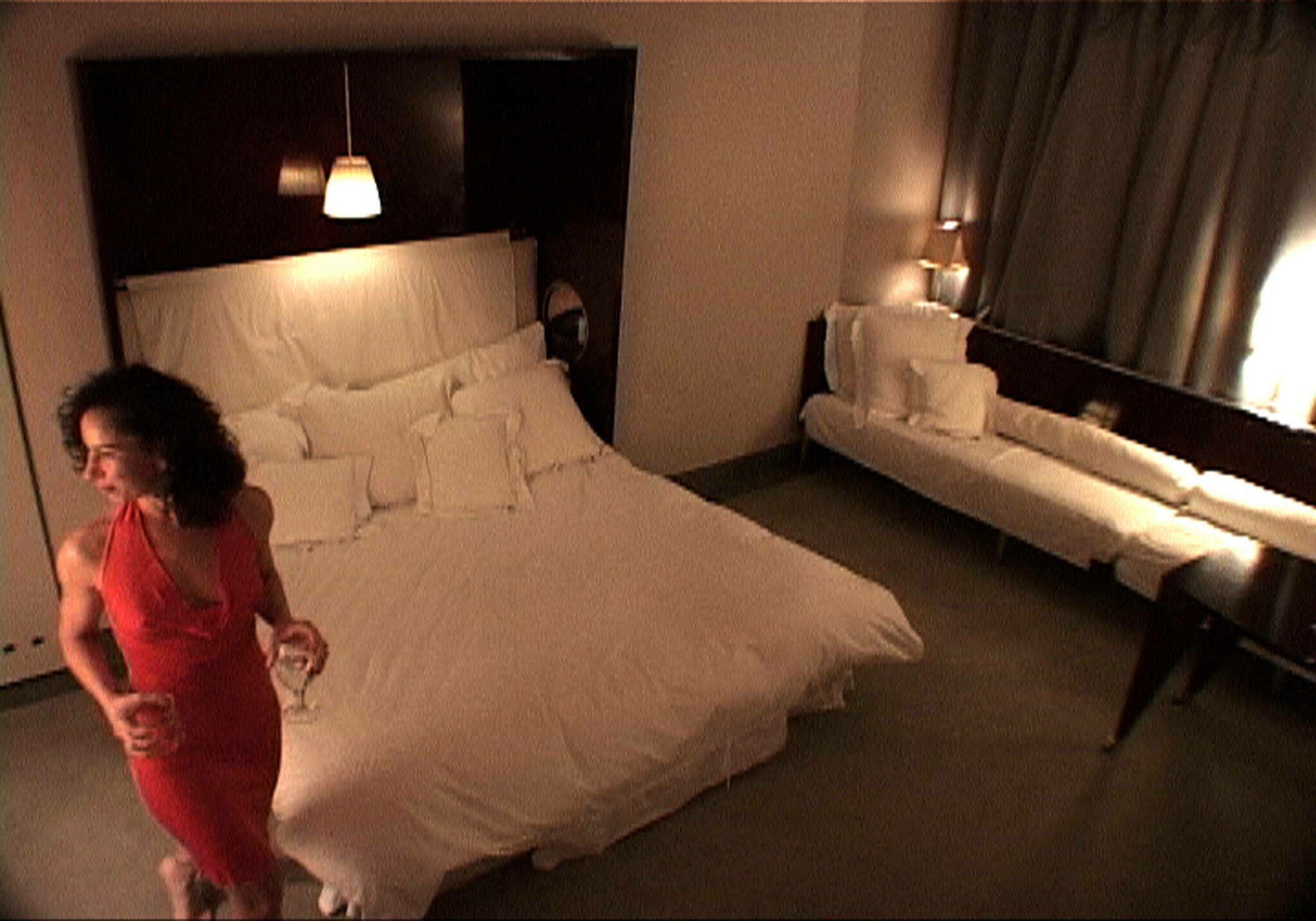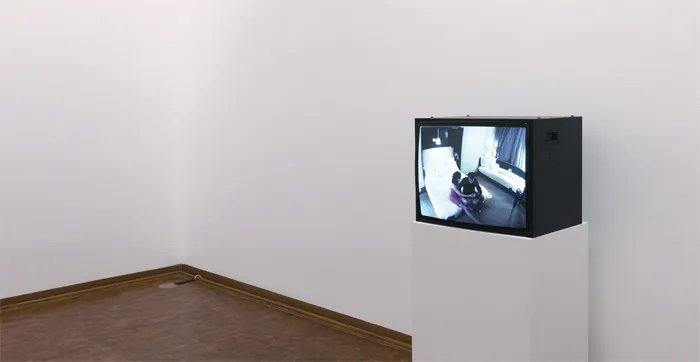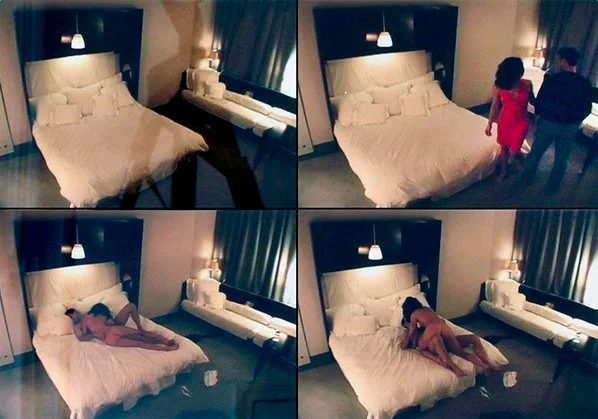ANDREA FRASER, UNTITLED, 2003
Untitled, 2003, video, color, silent, 60 minutes.
“The central action in Untitled has Fraser and a male client of her US gallery meet for a session of sex and video recording in a New York hotel room. This is the part of the work that suggests an archetypal narrative. And yet despite all that has been said about this project as sexual fantasy, feminist act, or aggressively personified critique of the market, Untitled is the stuff of break, transformation, and crisis in self- and public orientation. Fraser does not give us an artwork that is comfortable to experience or reason through, let alone write about with any certainty or authority. For her part, Fraser doesn’t simply represent the ideas of the project—to have consensual sex with an art collector who joins her in producing this new site-specific work, including a performance and video document—she acts out this scenario. Within the structure of the work, Fraser lives out a set of physically and psychologically demanding concepts, exchanges, and performance directions. She is always acting, but in her immersion within the piece, Fraser the performer is caught up as a subject and person, though of course we will never know the limit of either.
The complete piece is not accessible to the viewer of the work. The performance and video parts of Untitled, in actuality two overlapping but not parallel events, are difficult to separate. This complexity of experience for those who encounter the work was on evidence in the video’s most recent screening at the Museum Ludwig in Cologne this summer.
Fraser and a male collector meet in a room at the Royalton on a day in January 2003 for a performance (without an audience) that is recorded. His identity is undisclosed and his features are hard to make out in the video; Fraser’s are not. The sex took place before a stationary camera; an hour-long videotape was produced and shortly thereafter completed for exhibition.1 The collector covered the production expenses and paid the agreed-upon selling price for the artwork prior to the encounter.2 The performance document runs for sixty minutes without sound and without changes to the camera’s position; the footage is unedited, save the selection of frames with which to begin and end. In this filmic view, artist and collector have sex, converse, and rest in one long, real-time take. This is not a loop, though when on public view the video plays continuously on a small monitor in a room with bright lighting. The camera setup, elevated from the actors as much as the height of the room would allow, loosely suggests surveillance and other ocular regimes.” - Rhea Anastas


